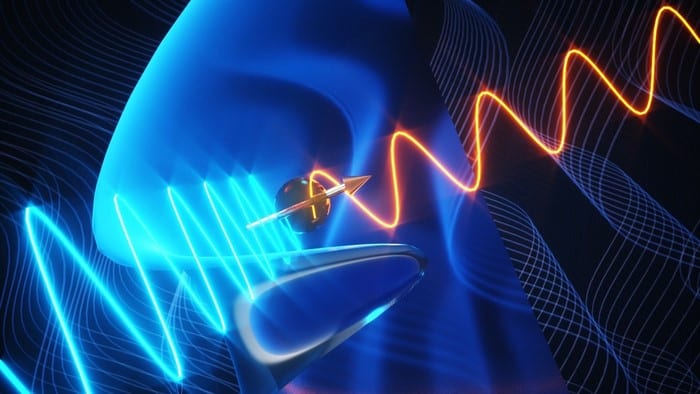 Kenneth Burch at Boston College and colleagues in the US and China, discovered the quasiparticle cousin of the Higgs boson in a relatively simple tabletop experiment carried out at room temperature.
Kenneth Burch at Boston College and colleagues in the US and China, discovered the quasiparticle cousin of the Higgs boson in a relatively simple tabletop experiment carried out at room temperature.
In 2012, the discovery of the Higgs boson at CERN’s Large Hadron Collider confirmed a prediction made nearly 50 years earlier about the mechanism by which some fundamental particles acquire mass. The Higgs mechanism is triggered by spontaneous symmetry breaking and was originally devised to explain how photons acquire mass in superconductors. As a result, analogues of the Higgs boson – collective excitations (or quasiparticles) called Higgs modes – can be found in superconductors.
Theory predicts that further symmetry breaking could lead to the emergence of a new type of excitation called the “axial Higgs mode”, which unlike the Higgs mode, has intrinsic angular momentum.
Now Burch and colleagues have observed an axial Higgs mode in rare-earth tritellurides. These are layered materials that harbour charge density waves (CDWs) in which chains of electrons form standing waves. These electrons behave in a highly correlated manner and a CDW is described as a quantum fluid – a category of materials that also includes superconductors.
Raman spectroscopy
Burch and colleagues probed their rare-earth tritelluride samples using Raman spectroscopy, whereby changes in the wavelength and polarization of scattered laser light provide information about how atoms vibrate in a sample. The team identified a peak in the material’s Raman spectrum that corresponds to a Higgs mode. They used a technique called quantum pathway interference to further characterize the Higgs mode. Quantum pathways are the different ways that the laser light can interact with the Higgs mode and the interference occurs because of the quantum nature of the system.

Collective behaviour emerges particle by particle
The two pathways of interest to the team were the excitation of a Higgs mode with no intrinsic angular momentum and the excitation of an axial Higgs mode. By varying the polarization of the incoming laser light and the polarization of the detected light, the team was able to observe this interference and confirm the existence of the axial Higgs mode in the material. What is more, the observations were made a room temperature, whereas most other quantum phenomena can only be seen at very low temperatures.
The team now hopes that their relatively simple experimental approach could be used to identify axial Higgs modes in other materials including superconductors, magnets, and ferroelectrics. This could prove useful for future technologies because materials containing axial Higgs modes could be used as quantum sensors. And because the mathematics of the axial Higgs mode is analogous to that used in particle physics, studying the quasiparticles could provide clues for what lies beyond the Standard Model of particle physics.
The research is described in Nature.
